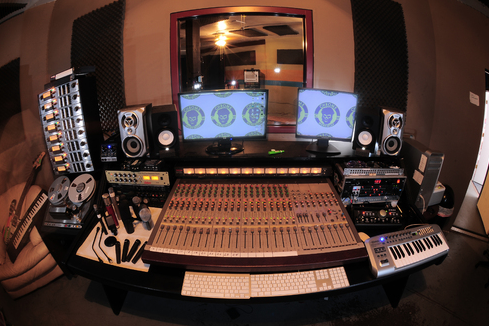Entertainment
Common Mistakes To Avoid When You Record Your Own Album

We live in the day and age where recording your own album and releasing it yourself is now commonplace. The technology has become easier to operate, significantly more compact and a whole lot cheaper than previous years. This means that there is more music being made to varying degrees of professionalism and quality. Just because you can record it at home, doesn’t mean it sounds better. There are a number of mistakes that are commonly made by musicians who are home recording for the first time, so in order to save the world from badly recorded albums, here are a few pointers on what to avoid for all those budding young producers out there.

- Not everything can be fixed in the mix when you are recording music. The most common mistake that is made by young producers and engineers is the belief that all of those bad takes and unwanted buzzes can be removed in the mix once everything is recorded. But this isn’t the case. It’s true that technology is making it a little easier to remove some of these unwanted frequencies and it’s certainly easier to stitch together a bunch of takes to make a Frankenstein’s-monster perfect take, but that isn’t the be-all and end-all. The most important thing to remember is that the better the recording and the take, the better the final product will be. The more “polishing” you have to do, the harder it’ll be to get a good sound. Performance comes first.
- Record the rhythm tracks first. Building a song is like building a house. The foundation should be laid down first. In the case of music, the lower frequencies are the foundations. Especially drums and bass. Nailing these parts down will make it a lot easier for your guitars, vocals and additional instrumentation to sit on top. If you do things in reverse, you’ll find that your drummer is trying to play along with a guitar take or a vocal take that is out of time and out of key. So, be sure to start from the bottom up. It’s also worth considering recording drums in a professional studio such as NuBreed Studios, even if you record everything else at home.
- BACK UP!!! Don’t be a fool by just saving things on your computer’s internal hard drive, make sure you have additional hard drives to back everything up. If you’ve been working on a project for months, the last thing you want is to lose it all when your computer has a little meltdown. It happens more frequently than you can imagine. On that note, be sure to organize your files and label everything you do. Tracks begin to pile up and if things get lost, you don’t want to be wading through a sea of unnamed files looking for that perfect vocal take.
- Try it dry. Everything sounds good with effects pedals when you’re replaying for yourself, but when you add to the mix, it can become very cluttered very quickly. So try recording everything dry and add the effects later. It’s a method that will make it a whole lots easier to EQ and mix later down the line.
- Tune up. It goes without saying, but make sure you tune up before every single take. Guitar strings can stretch and tighten when the temperature changes, so it’s super important to tune up as frequently as possible. The same goes for violins and any other stringed instruments.
-

 Tech11 years ago
Tech11 years agoCreating An e-Commerce Website
-

 Tech11 years ago
Tech11 years agoDesign Template Guidelines For Mobile Apps
-

 Business6 years ago
Business6 years agoWhat Is AdsSupply? A Comprehensive Review
-

 Business10 years ago
Business10 years agoThe Key Types Of Brochure Printing Services
-

 Tech8 years ago
Tech8 years agoWhen To Send Your Bulk Messages?
-

 Tech5 years ago
Tech5 years ago5 Link Building Strategies You Can Apply For Local SEO
-

 Law5 years ago
Law5 years agoHow Can A Divorce Lawyer Help You Get Through Divorce?
-

 Home Improvement6 years ago
Home Improvement6 years agoHоw tо Kеер Antѕ Out оf Yоur Kitсhеn































